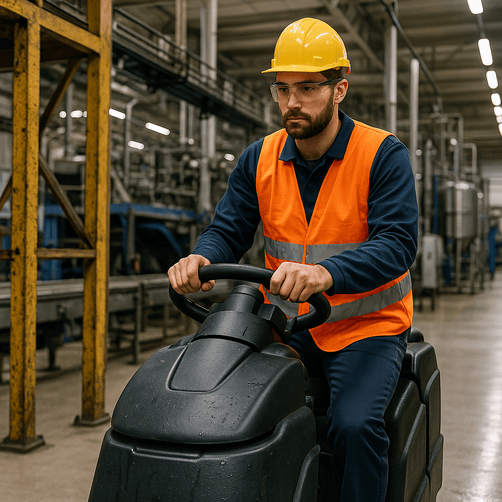Industrial Cleaning has become an essential part of how Australian facilities protect equipment, maintain safety, and reduce business expenses. Factories, distribution centres, mining sites, transport depots, and food processing plants rely on heavy machinery to keep production moving. While many operations prioritize maintenance, repairs, or part replacements, the ongoing cleanliness of machinery and work areas often receives less attention than it deserves. However, the condition of equipment is directly linked to how clean it stays. Dust, grease, metal shavings, organic waste, and chemical residue all contribute to early wear, unexpected downtime, and rising operating costs. Understanding the relationship between Industrial Cleaning and machinery performance reveals how a proactive approach benefits both productivity and business budgets.
Why Clean Equipment Lasts Longer
Machines are constantly exposed to contaminants generated through production, handling, heating, cutting, or transport activities. Dust and debris settle into moving parts, while grease builds up on motors and conveyor belts. In food manufacturing, organic proteins or oils can harden and create deposits that slowly corrode machinery. In workshops, metal shavings infiltrate small crevices, affecting sensors or gears. These contaminants may look harmless, but their gradual build-up weakens key components.
A clean surface reduces friction between moving parts, delays corrosion, and prevents sensors from misreading data. As a result, sensors continue to operate accurately, lubrication remains effective, and parts stay aligned without additional strain. The manufacturing and automotive sectors feel this most strongly due to frequent friction, chemical use, and continuous production. In facilities where machinery runs for extended hours, cleaning plays an equally important role as servicing or lubricating equipment.
How Industrial Cleaning Reduces Operating Costs
Businesses may spend significant amounts on maintenance contracts or equipment procurement while overlooking simpler cost-saving methods. Industrial Cleaning lowers operational expenses by preventing premature wear and helping machinery run efficiently. When contaminants clog motors, machinery draws more power to maintain speed, increasing electricity spend. Hydraulic systems, ventilation units, and compressors also consume more power when obstructed by dust or hardened grease. A clean machine uses less energy to do the same work, reducing monthly utility costs.
Industrial Cleaning also minimizes unplanned downtime by reducing breakdown frequency. When equipment unexpectedly fails, the cost is not just in parts and labour but also in lost productivity. A halted production line can delay shipments or affect supply commitments. Even minor cleaning neglect may lead to regulatory repercussions, particularly in food processing, chemical manufacturing, or pharmaceutical operations where hygiene breaches attract fines or shutdowns. Proper cleaning therefore contributes directly to business continuity by helping workplaces meet compliance obligations.
Cleaning Techniques That Protect Machinery
Industrial Cleaning involves more than basic surface wiping. High-powered degreasing ensures that oils and chemical residues are lifted instead of smeared across components. Steam cleaning assists with stubborn deposits, eliminating hardened protein build-ups in food processing plants. Some facilities rely on solvent cleaning to dissolve sticky substances without damaging sensitive parts.
For metalworking sites and large storage warehouses, vacuum extraction systems control dust both in the air and on machinery. This prevents airborne particles from blocking ventilation systems and entering mechanical cavities. Meanwhile, sanitization remains vital in pharmaceutical and food facilities where bacteria and allergens may contaminate products. These environments require deeper cleaning to protect both machinery and public health standards.
When Professional Services Become Necessary
There is a clear distinction between routine internal cleaning and highly specialized Industrial Cleaning. While facility staff may manage surface cleaning, handling hazardous substances, chemical residues, or large-scale machinery requires trained specialists. Industrial sites often need cleaning at heights, inside confined spaces, or around heavy equipment. Technicians must understand Waste and Hazardous Substances (WHS) obligations, correct disposal procedures, and equipment-specific risks.
This is when professional services become essential. Rather than viewing expert cleaning as a luxury, facilities use it as a strategic decision to protect assets and reduce liability. Some industries rely on trained specialists who handle difficult tasks safely. Providers such as Industrial Cleaning Brisbane discovercleaning.com.au deliver support for large facilities that need more technical, compliant cleaning solutions without disrupting operations. Their knowledge of safe waste disposal, WHS responsibilities, and heavy-duty equipment cleaning provides an added layer of risk management.
Industries That Benefit Most from Scheduled Industrial Cleaning
While every facility benefits from cleaning, some industrial environments experience greater exposure to contaminants. Warehouses and logistics centres accumulate tyre dust, fuel emissions, and forklift residue. Mining operations generate heavy particulate matter that affects conveyor belts and engines. Manufacturing plants frequently deal with grease, plastics, adhesives, or solvents. Industrial kitchens collect oil deposits that impact ventilation systems. Transport depots and workshops handle brake dust, lubricants, and battery residue.
Regular Industrial Cleaning ensures these contaminants do not build up to harmful levels. In each case, machinery remains efficient for longer, and breakdowns decrease. For food and medical industries, scheduled cleaning also protects product integrity, preventing contamination that leads to expensive recalls.
How to Build a Cost-Saving Cleaning Schedule
Many businesses struggle to determine how often equipment needs cleaning. The first step is identifying high-risk equipment such as compressors, conveyor motors, boilers, skimmers, forklifts, and robotic arms. These parts often accumulate contaminants faster than general machinery and require more frequent cleaning. Next, determine cleaning frequency based on production output, type of waste generated, and equipment vulnerability.
Monitoring practices are crucial for long-term savings. Cleaning logs, photos, compliance reports, and bacterial testing records provide valuable insight into cleaning effectiveness. Proper documentation also helps facilities demonstrate compliance if inspected. Assessing cleaning performance regularly enables businesses to refine schedules and invest in cleaning resources where they produce the greatest savings.
Supporting Information Through Internal Articles
Relevant insight about operational safety and facility care can be strengthened by linking to reputable resources. Articles such as reducing operational risks in factories complement discussions on workplace hazards and machinery threats. For broader awareness on maintaining a safe workspace, referencing material like workplace hygiene for businesses may help readers explore additional preventative measures beyond cleaning alone. These connections reinforce the idea that cleaning forms part of a wider operational protection strategy.
Conclusion
Industrial Cleaning does far more than improve appearances. It protects high-value equipment, reduces energy consumption, strengthens compliance, and minimizes repair expenses. Clean machinery runs better, lasts longer, and supports safety and product reliability. Whether a facility manages complex manufacturing, logistics transport, or food preparation, Industrial Cleaning should sit beside maintenance as a central part of asset care. Businesses that build proactive cleaning programs continue benefiting long after the cleaning takes place.



